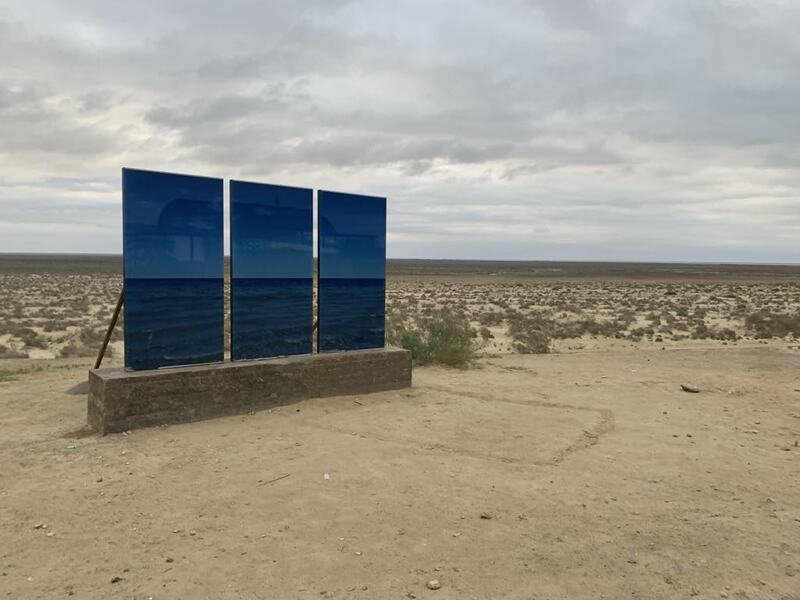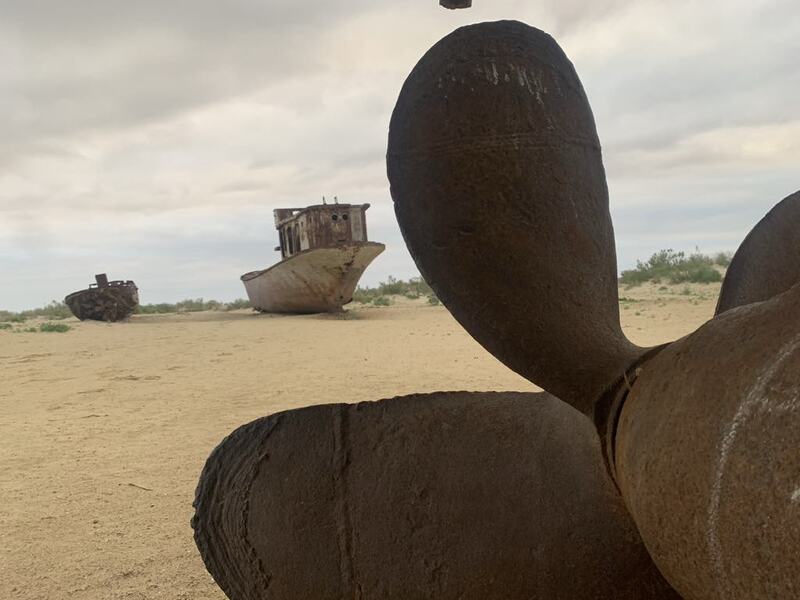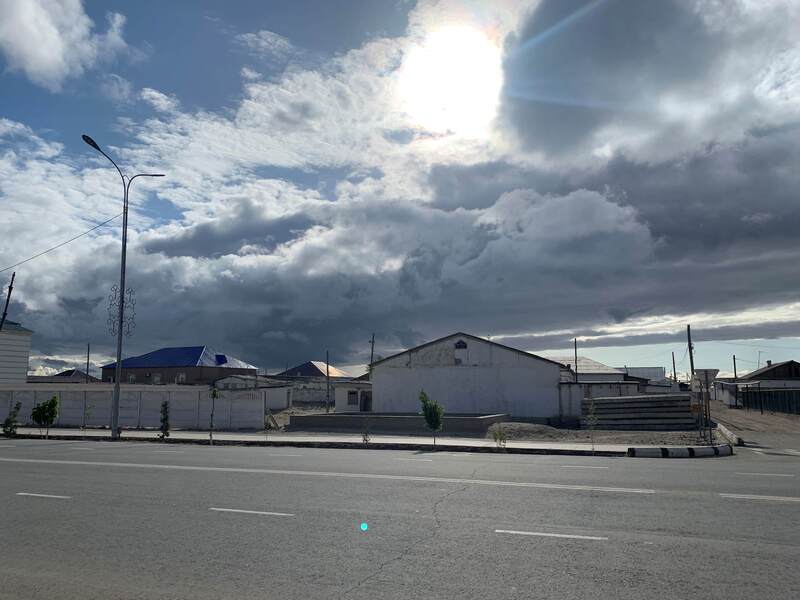The Aral Sea. Once a vast expanse of water, this inland sea has become a haunting reminder of unchecked exploitation and environmental degradation. In this blog, we delve into the tragic tale of the Aral Sea's decline.
In the middle of Central Asia lies a small body of water called the Aral Sea.
Extending between Kazakhstan and Uzbekistan, this huge inland sea used to be one of the world’s largest lakes at 68,000 square kilometres in size.
Nevertheless, what had been a lake large enough to support communities, has now turned into nothing more than an extant lake and a severe lifeless wasteland.
Nonetheless, the apparent desert surrounding the Aral Sea is not a desert but the remnants of a seabed, hidden beneath the water for centuries...

A monument built to remember the waters of the Aral Sea.
Aral Sea History
The history behind the decline of the Aral Sea is a combination of mismanagement by the Soviet Union, neglect of the environment, and the region's population being too slow to react until it was too late.
The story of the Aral Sea’s collapse begins in the 1960s. The government of the USSR embarked on an ambitious project to irrigate the surrounding region, turning arid plains into fertile land, perfect for agriculture.
The two main rivers feeding the Aral Sea, the Amu Darya and the Syr Darya, were diverted. The water was used to irrigate the farmland around them. Initially, it saw increased agricultural productivity as the local farmers were able to cultivate their crops more effectively, despite the harsh sun.
However, the impact it had on the Aral Sea would not be seen until the 1980s.
Aral Sea Downfall
Now that the water from the rivers was being diverted to support the surrounding farmland, the sea which they originally fed began to recede.
By the mid-1980s, the Aral Sea’s shoreline had shifted hundreds of kilometres, leaving a desolate salt-flat in its wake.
The fishing villages that had been reliant on the sea to support their local economy had to be abandoned, as fishing was obviously no longer an option.
As a result, the once-thriving Aral Sea fishing industry all but completely collapsed. Fish stocks throughout the region began to shrink, and what remained of the Aral Sea had become incredibly salty, resulting in almost no fish surviving.
This meant that even the remaining portion of the sea was effectively unusable.
What’s more, the dusty plains which remained led to intense dust storms which caused respiratory illnesses in the locals who remained, encouraging even more of the local population to leave.
The once-thriving fishing village of Moynaq.
Consequences of Aral Sea's Decline
The consequences of the Aral’s Sea’s decline are far reaching, and stretch well beyond the shoreline (or, former shoreline).
The disappearance of such a huge body of water has led to changes in the local climate. Summers have become hotter, and winters have become much colder.
The dust from the seabed blows through the region, causing huge duststorms which have led to degradation of the soil.
Since the late 20th century, projects to address the crises have been underway, but there’s little chance of either restoring the sea to its full former glory. Most projects aim to tackle the immediate problems caused by the new environment.
Huge dams and reservoirs have been built in the region around (what’s left of) the Aral Sea, aiming to divert water back.
These have yet to see any major success.
But, there is hope on the horizon.

The remnants of the Moynaq fishing fleet.
The Aral Sea Future
In the last decade, there has been a renewed push to address the problems in the region, leading to increased international cooperation focused on managing the regions water sustainably.
The World Bank has begun funding restoration projects and a new organization, IFAS (International Fund for Saving the Aral Sea), has been established. It aims to find new innovative solutions to the issue.
The Aral Sea today serves as a cautionary tale.
Engineering projects across the world often find themselves at odds with the natural world, however pushing against the environment too aggressively can result in unintended consequences.

